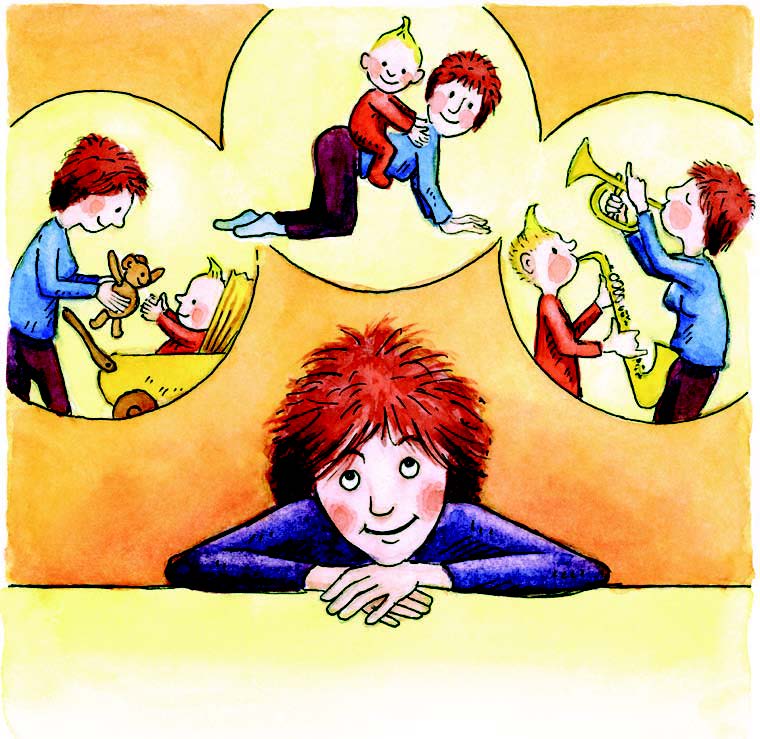Hepatoblastoma and other liver tumours
Primary liver tumours, both benign and malignant, are rare in childhood and adolescence. Hepatoblastoma is the most frequent primary liver tumour, mostly occuring in newborns, infants and toddlers. This text provides information expecially on hepatoblastoma. Further liver tumours (such as hepatocellular carcinoma) are but briefly mentioned in this introduction, some of the tumours (such as sarcomas) being described elsewhere on this website.
Author: Maria Yiallouros, Reviewer: Prof. Dr. med. Irene Schmid, English Translation: Dr. med. Gesche Riabowol (nee Tallen), Last modification: 2024/05/30 https://kinderkrebsinfo.de/doi/e77085
Liver tumours that have arisen from liver tissue (primary liver tumours) are rare in children and adolescents. They account for less than 2 % of all paediatric tumours and may be benign or malignant. Malignant liver tumours (liver cancer) represent about 1 % of all malignancies in childhood and adolescence.
The most frequent primary tumour of the liver is hepatoblastoma. This highly malignant tumour accounts for about 43 % of all primary liver tumours. Other primary, malignant liver tumours are hepatocellular carcinoma (HCC) with approximately 23 % and sarcomas (circa 6 %). Benign primary liver tumours are haemangiomas (about 13 % of liver tumours), hamartomas (6 %), adenomas (2 %) and the focal nodular hyperplasia (2 %), to name a few.
The different types of liver tumours appear preferably in typical age periods. Hepatoblastoma primarily affects toddlers between six months and three years of age, while hepatocellular carcinoma rather affects school children and adolescents.In newborns, haemangioma is the most frequent liver tumour. Taken together, 75 % of primary childhood liver tumours are malignant, the majority affects infants and toddlers. The following table presents a summary.
|
Tumour malignancy |
Kind of tumour |
Häufigkeit |
Age group |
|---|---|---|---|
|
Malignant tumours |
Hepatoblastoma |
43 % |
Newborns, infants, toddlers |
|
Hepatocellular carcinoma |
23 % |
School children, adolescents |
|
|
Sarcoma |
6 % |
School children, adolescents |
|
|
Benign tumours |
Hemangioma |
13 % |
Newborns, infants, toddlers |
|
Hamartoma |
6 % |
Newborns, infants, toddlers |
|
|
Adenoma |
2 % |
School children, adolescents |
|
|
Focal nodular hyperplasia |
2 % |
School children, adolescents |
Aside from primary tumours, metastases of other cancers, such as leukaemias, lymphomas, neuroblastoma, nephroblastoma and pancreatic tumours, can occur in the liver as well. Information on those malignancies can be found elsewhere in this portal. Referring to liver sarcomas, please see our information on soft tissue tumours / sarcomas.
Important: all children and adolescents with a primary liver tumour should – due to anatomical complexity of the liver and resulting surgical challenges – be treated by experienced paediatric oncologists and surgeons. In particular malignant tumours are associated with unfavourable prognosis if not treated adequately.
The following chapters will inform you about the most frequent liver tumour, hepatoblastoma.
References 
- Erdmann F, Kaatsch P, Grabow D, Spix C: German Childhood Cancer Registry - Annual Report 2019 (1980-2018). Institute of Medical Biostatistics, Epidemiology and Informatics (IMBEI) at the University Medical Center of the Johannes Gutenberg University Mainz 2020 [URI: https://www.kinderkrebsregister.de/ typo3temp/ secure_downloads/ 42507/ 0/ 1c5976c2ab8af5b6b388149df7182582a4cd6a39/ Buch_DKKR_Jahresbericht_2019_komplett.pdf]
- von Schweinitz D, Schmid I: Lebertumoren. in: Niemeyer C, Eggert A (Hrsg.): Pädiatrische Hämatologie und Onkologie. Springer-Verlag GmbH GDeutschland 2006, 2018 2. vollständig überarbeitete Auflage 2018, 465 [ISBN: 978-3-662-43685-1]
- von Schweinitz D, Becker K: Hepatoblastom. S1-Leitlinie 025/011 AWMF online 2016 [URI: https://www.awmf.org/ uploads/ tx_szleitlinien/ 025-011l_S1_Hepatoblastom_2016-06-abgelaufen.pdf]

